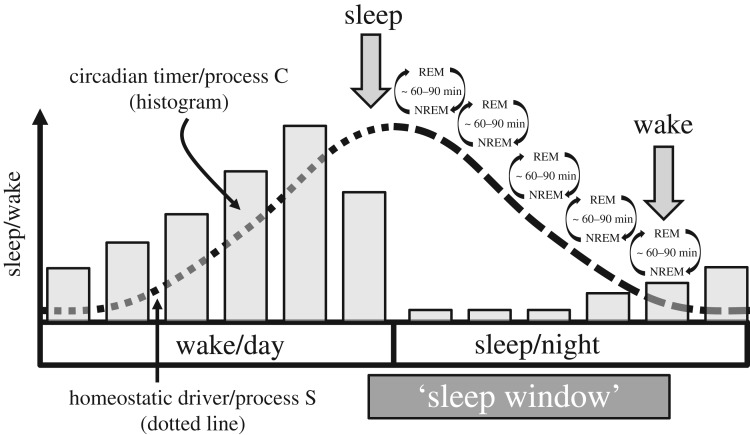Figure 4.
A depiction of the two-process model of sleep regulation [41]. A 24 h circadian timer (process C) and a homeostatic driver (process S, dotted line) interact to determine the timing, duration and structure of sleep. A circadian driven rhythm of sleep promotion during the night and wake during the day is opposed by a homeostatic driver which increasingly promotes sleep (S) during the day, and then during sleep, homeostatic sleep pressure is dissipated towards the end of the sleep episode. The time of day most suitable for sleep—the ‘sleep window’ occurs as a result of the combined effects of the circadian and homeostatic drivers. Sleep pressure within the sleep window will be highest during the first part of the night but increasingly reduced as the homeostatic drive for sleep dissipates towards the end of the night. During sleep most humans experience 4–5 cycles of NREM/REM sleep and, without the influence of an alarm clock, we wake naturally from REM sleep [42].

